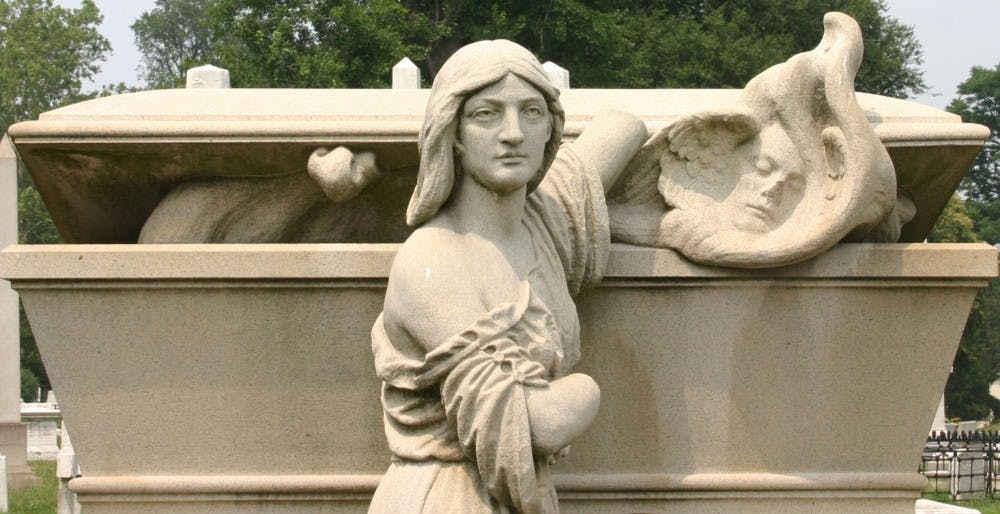“I’ve always loved being in cemeteries and I don’t know why,” I confess to Beth Savasanta, as I perch on a chair in her office. She laughs and assures me I’m in good company, gesturing to her three co-workers typing dutifully on their computers.
Beth is the Programs and Volunteer Coordinator of Laurel Hill Cemetery, a National Historic Landmark about seven miles from Penn. It’s really old, sort of creepy and enormous. 74 acres to be exact, occupying a sprawling hilltop with views of the Schuylkill River, full of epic mausoleums and monuments to Philadelphia's old money. It sits across from city streets, but the grounds are quiet with that magical cemetery stillness.
“Laurel Hill was constructed during the rural cemetery movement,” Beth explains. In the early 1800s, wealthy urbanites began to construct beautiful rural cemeteries for their dead. These rural cemeteries were intended to be peaceful resting places, far from dirty urban spaces. Laurel Hill was one of the first cemeteries built as a rural cemetery.
Since it takes cash to honor the dead with scenery and a giant sculpture for a headstone, Laurel Hill is occupied by Philadelphia’s elite. Beth estimates that 75,000 people haunt the grounds, including politicians, civil war generals, and people who went down with the Titanic.
Today, Laurel Hill doesn’t perform enough burials to be considered an active cemetery. Instead, the staff works to preserve the history and natural beauty, and to make the cemetery accessible to the public
Through the year, Laurel Hill hosts many events, like concerts and theater performances, to bring people into Laurel Hill.
This year, the cemetery is host to a performance of Hamlet and movie screenings, among other events. They offer tours of all kinds, from entry level overviews, to ~haunted~ tours, to themed historical tours. The events and tours bring history to a modern audience.
As a National Historic Landmark, Laurel Hill archives are hugely vast. They include books, newspaper articles, legal documents, letters, and other overly personal primary sources. Additionally, the cemetery does work with individual history, focusing on genealogy research for families.
Laurel Hill is constantly growing. There is an ongoing project to map and catalogue the graves online, and ongoing work to digitalize the archives. Each year, they host new events that invite the community to engage and visit. It’s a cemetery, but it’s anything but dead.
The grounds are open to the public 7 days a week, whether to visit an ancestor or just explore the labyrinth of ancient graves. If you’re one of those weirdos drawn to cemeteries, go check it out.
Travel Info: Laurel Hill may be a bit of a hike, but it’s a hike worth making. Here’s how to get there from Penn.
Public transportation (~50 minutes): take the Market Frankfort line alllllll the way to Allegheny station. Get onto the 60 bus for about 20 minutes to Allegheny Ave and 35th street. Laurel Hill should be across the street.
Uber (~15 minutes): hopping into an Uber is by far the quickest way of getting there. It costs about $15 each way, so definitely not the cheapest route.
Bike (~30 minutes): it’s basically a straight shot along the river trail. If you have a bike and time and energy, it would be a beautiful ride.

